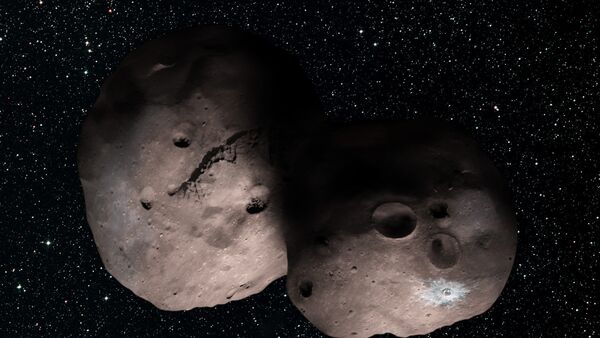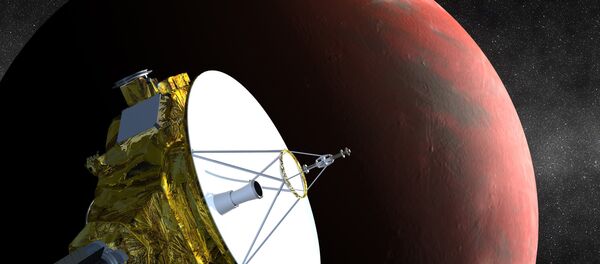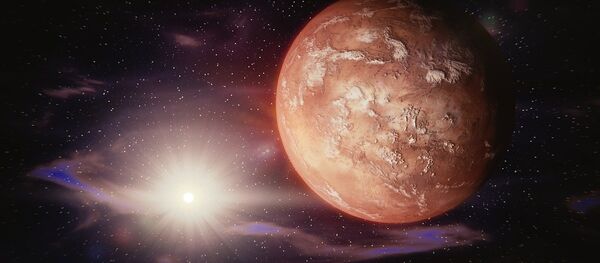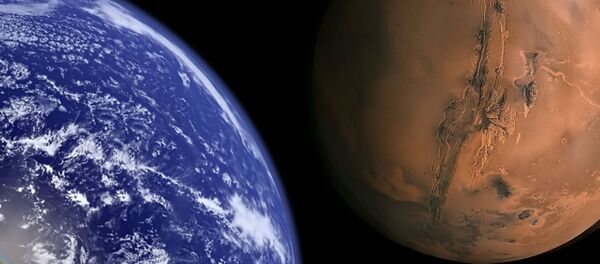Approximately 4.3 billion miles from Earth, in the vast icy expanse of the solar system beyond Neptune, lies a small recently discovered object christened MU69 by astronomers. Out there, the sun is only a bright point in the sky, not particularly distinguishable from other stars. No human spacecraft has ever explored this space — the Voyager probes' missions ended after photographing the eight planets — so the New Horizons probe is a pioneer.
New Horizons was launched January 19, 2006, from Cape Canaveral, with the mission to visit and photograph the region beyond Neptune, known as the Kuiper Belt. NASA's Tumblr page explains that "The Kuiper Belt is a disc-shaped region of icy bodies — including dwarf planets such as Pluto — and comets beyond the orbit of Neptune. It extends from about 30 to 55 Astronomical Units [the distance from the sun to Earth], and is probably populated with hundreds of thousands of icy bodies larger than 62 miles across, and an estimated trillion or more comets."
The most famous Kuiper Belt Object (KBO) is Pluto, which from its discovery in 1930 until its reclassification as a KBO in 2006 was believed to be the ninth planet in the Solar System. Today, Pluto is classified not as the most distant planet, but actually as the nearest Kuiper Belt Object.
MU69 is another of these icy objects, a billion miles beyond Pluto. New Horizons visited Pluto on July 14, 2015, and continued past it to investigate other KBOs that might be found along its trajectory. When the Hubble Space Telescope found MU69 on June 26, 2014, it was added to New Horizons' itinerary.
New Horizons will arrive at MU69 on New Year's Day, 2019, for a fast and close flyby. The camera-laden space probe will shoot past MU69 at a knuckle-whitening 30,000 miles per hour, and it will pass only 1,400 miles above MU69's surface, according to Space.com. As it approaches and passes MU69 it will send back many high-resolution photographs of the object, along with precise measurements of its surface and telemetry, just as it did Pluto and its moons in July 2015. MU69 is so incredibly far away, though, that even traveling at light-speed the signal will still take over six hours to reach Earth.
Alan Stern, the mission principal investigator from the Southwest Research Institute in Boulder, Colorado, described the new finding to NASA.gov as "spectacular" and predicted "a scientific bonanza" from the flyby.
At present, astronomers know extremely little about MU69. That is why NASA has produced two different possible representations of its appearance. On July 14 the KBO occulted a star — that's what astronomers call it when an object passes in front of it and blocks its light — which gave astronomers at a remote site in southern Argentina the opportunity to measure its size more accurately than Hubble's fuzzy photos had previously allowed. They think it's about 25 miles long, occupying an amount of space roughly equal to Massachusetts Bay. Based on the occultation results it is probably a single object, oblong in shape, but perhaps two objects in very close proximity or mutual orbit, or perhaps even in contact, giving the appearance of a giant icy peanut flying through space.
The New Horizons probe is expected to continue operating until at least 2020, so long as NASA continues to fund it and to find useful objects for it to investigate in the Kuiper Belt.







